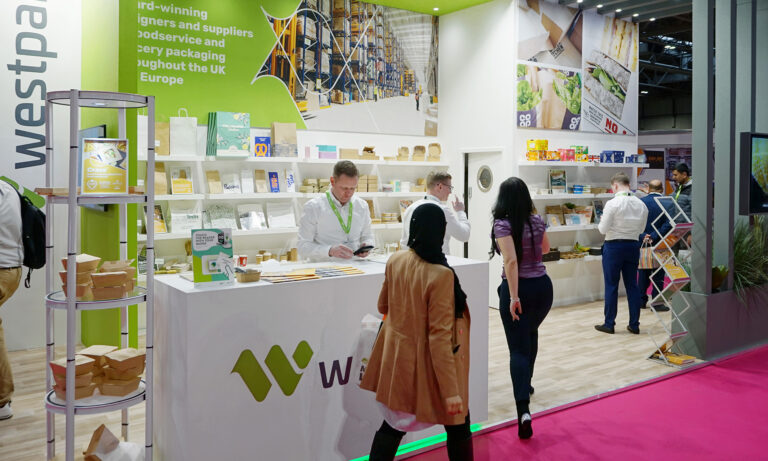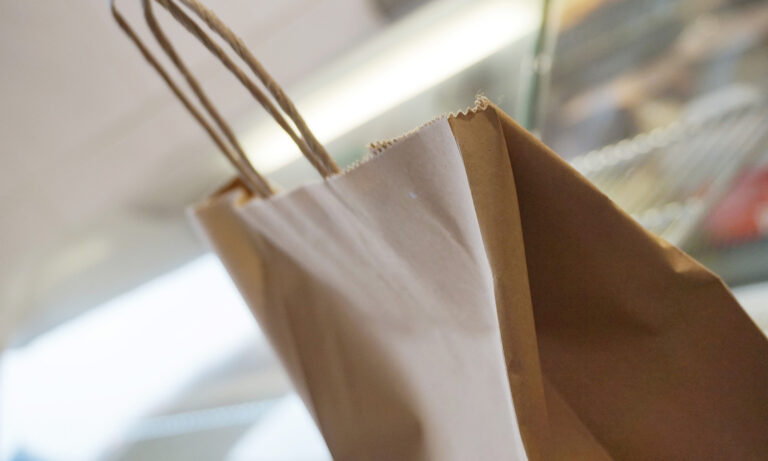At Westpak, we pride ourselves on being true experts in sustainability. Part of this expertise lies in our understanding that sustainability is a highly complex topic driven by various considerations. To effectively assess these requirements, it’s essential to have a full understanding of the latest terminology, developments and principles that underlie the broader sustainability movement. As such, our new sustainability hub provides a detailed exploration of the most critical sustainability terms and concepts including answers to some of the most frequently asked sustainability questions and a comprehensive glossary of a wider range of environmental terms, processes and materials.
Below are a selection of FAQs from our new sustainability page. For more information, and to explore our full sustainability glossary visit westpakuk.com/sustainability
What is the difference between compostable and biodegradable packaging?
The terms ‘biodegradable’ and ‘compostable’ should not be used interchangeably. Biodegradable products should be able to break down naturally. This natural process follows three key stages: ‘biodeterioration’, ‘biofragmentation’, and ‘assimilation’. Compostable packaging, by contrast, requires more specific environmental factors in order to successfully be broken down. This can may include certain temperature or moisture level thresholds, for example. Such products will also vary in their ability to be recycled. Paper and card-based products, for example, are compostable and are also recyclable. By contrast, Biopolymer and Bio-plastic products classed as compostable are not recyclable.
What is the difference between being ‘sustainable’ and ‘eco-friendly’?
The terms ‘sustainable’ and ‘eco-friendly’ are often used broadly in their application, but share a common concern for various ecologically detrimental processes. ‘Sustainability’ gained prominence as term following the publication of the ‘Brundtland Report’ in 1987, which positioned the concept around economic, social and ecological considerations. The term is generally seen as relating to the idea of a harmonised relationship between human life and environmental considerations. The term ‘eco-friendly’ is concerned purely with environmental considerations. While broad in its use, it refers to the idea of products and processes having the smallest possible negative impact on the environment.
What are the main considerations for packaging sustainability?
At Westpak, we realise that while sustainability may be a vital consideration for both stakeholders and consumers, it isn’t necessarily simple. We work with businesses at key points in the food distribution chain to realise their sustainability goals while minimising disruption and risks to their business model. We can advise on an array of various, complex environmental packaging attributes such as whether it is recycled, recyclable, re-useable, biodegradable, compostable etc. We can also advise on the pros and cons of each attribute, the extent of their mutual exclusivity and the broad sustainable impact of each option. We can also advise on the suitability of each option for the most seamless integration with your current businesses model.
What is the difference between ‘recycled’ and ‘recyclable’?
Recyclable items of packaging are those which are able to be recycled at their end-of-life stage. Recycled packaging, by contrast, is that which already contains previously recycled materials. A key reacted term is ‘recycled content’ which refers to the ratio of recycled material present in the new product. This ratio can vary significantly for different recycled products.
How can you identify a piece of packaging’s recyclable or sustainable credentials?
In the UK, various symbols are used to indicate the environmental characteristics of certain products and packaging. ‘Recycle’ and ‘Rinse | Recycle’ symbols are commonly shown on items that are widely processed for recycling. Some products may also often show nominations of ‘recycle’ and ‘don’t recycle’ icons indicating that certain parts of the item can be recycled with other part will need to be removed and processed separately.
Various other symbols and icons are used with varying meanings. ‘The green dot’ symbol, can often be misinterpreted, as it only signifies that the producer has made contributions to recycling efforts. The symbol does not actually necessarily correlate with any recyclable properties of the item itself. Similarly, the icons known as the ‘mobs loop’ only signifies that the item in question is able to potentially be recycled. Recyclable plastics, however, are often more clearly marked through being assigned a number as part of the ‘resin identification code’. Numbers from 1-7 are assigned to different plastics in accordance with their specific recyclable properties. Paper and cardboard items will often show the ‘recycle’ or ‘Rinse | Recycle’ icons. In addition, such products may also show the Forest Stewardship Council (FSC) logo where they have been sourced from forest that adhere to the FSC’s standards.
Products recognised as being industrially compostable to EN 13432/14955 standards will often show a ‘seedling’ logo. Many items will also show a ‘home composting’ logo which signifies the products can be composted under more natural, non-industrial processes.
More generic terms on various forms of packaging, such as ‘eco-friendly’, can often be misleading for consumers due to specific ways products may need to be processed at the end-of-life stage to ensure their green credentials are realised.
What materials do Westpak use in their packaging?
We use over twenty materials in our packaging products. This includes kraft paper, Blown Bended Polythene, Biaxially-oriented polypropylene (BOPP), Cardboard (with additional CPET and PE coatings), Cartonboard, Corrugated Cardboard, Expanded polystyrene (EPS), Glass Fibre, High-density polyethylene HDPE, Low-density polyethylene (LDPE), Metals, Polyethylene (PE), Polyethylene terephthalate (PET or PETE), Polypropylene (PP), Polyvinyl chloride (PVC) and Recycled polyethylene terephthalate (rPET). All these materials are listed in our sustainability glossary with details on each including their recyclable and/or other environmental credentials.
What are the latest sustainability developments in the food packaging industry?
Sustainability around packaging continues to be the primary trend for the UK food packaging industry. While there are notable differences in compostable and biodegradable packaging, or recyclable and recycled packaging, this broad array of ‘sustainable’ solutions is drawn together by a clear preference over non-recyclable packaging that moves directly from single use to landfill disposal. 2022 will also see a ‘plastic tax’ introduced on plastic with minimal or absent recycled materials. One of the largest supermarket chains, Tesco, has also recently announced that it has removed more than 1 billion pieces of plastic from its UK business. We have also seen rising popularity in reusable packaging, particularly in grocery retail stores. Dispensing stations for grocery goods such as pastas and cereals may increase in popularity.


